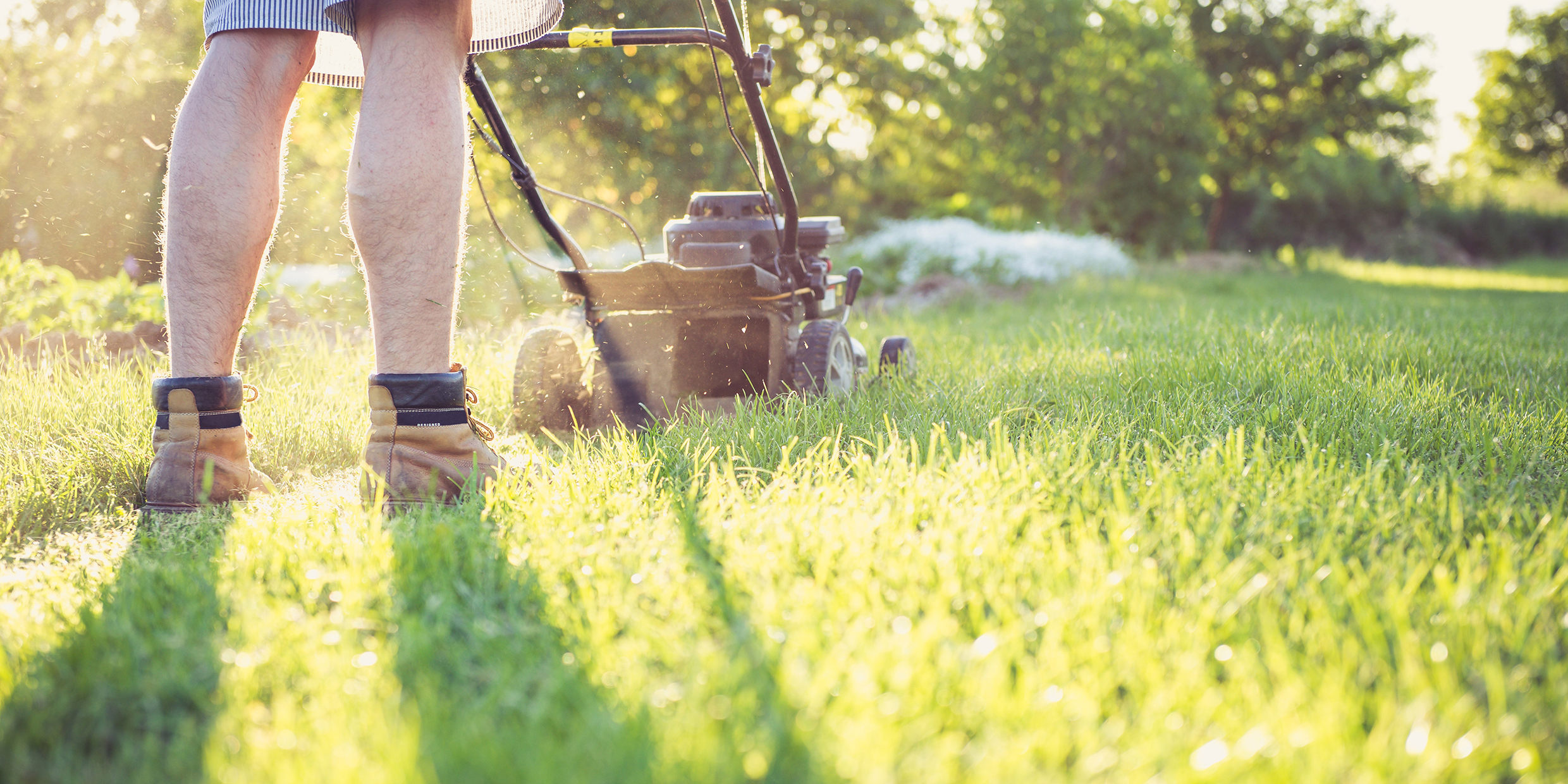Originally published 26 November 2002
In 1941, when I was 5 years old, my parents built a house in the rural suburbs of Chattanooga, Tennessee. It was the classic American dream house, a two-story modified Cape, with a white picket fence around the backyard, a badminton court, a victory garden, and, of course, a lawn.
Well, a lawn sort of.
My father certainly wanted a lawn. A lawn was the epitome of the middle-class American dream. He imagined an inviting greensward sloping up from the street, and a grassy backyard where his children could romp and play.
But nature conspired against him. Tall pine trees, front yard and back, robbed the soil of the nutrients grasses needed to grow, and blocked the sun. This was before the days of a lawn care industry, which might have cut down the trees and pumped the soil full of fertilizer and pesticides. What we had instead of the desired lawn was an expanse of bare earth and pine needles.
It suited us kids perfectly. We made roads in the bare soil for our toy cars. We chased lightning bugs beneath the pines. Pine needles might not have been as soft as grass under our bare feet, but they weren’t all that bad, either.
Nature had a way of encroaching on our unkempt acre. Red-headed woodpeckers banged away in the trees. Black snakes slipped through the picket fence. Cicadas, crickets, and tree frogs sang the night away. All things considered, our scraggy plot was something of an unintended nature preserve, and many of my best memories of youth are of rubbing elbows with something wild.
Naturally, when I grew up, I wasn’t much for lawns. The New England house in which my wife and I raised a family has hardly enough plot to make a lawn worthwhile; better to let the dandelions and crabgrass have their way. We don’t live in one of those immaculately manicured suburbs where the neighbors care.
Our summer cottage in Ireland has more than an acre of land, and when we bought it 25 years ago, we imagined wide-open spaces, carefully tended, and planted with lawny sorts of plants. Bad idea. Beating back the furze and heather was more trouble than it was worth. What we have now is a warren of little clearings in a wild tangle of native plants — and foxes, rabbits, hedgehogs, stoats, and a heap of birds and bugs.
For my wife and me, a picture-perfect lawn was never an option; we were too lazy and nature was too vigorous. But for environmentalists, America’s commitment to the perfect greensward is an abomination.
Of course, not even the most ardent environmentalist questions the attractiveness of open grassy spaces. The New England village green is one of civilization’s great inventions, and landscape architect Frederick Law Olmsted’s many city parks — with their graceful mix of woods, meadows, and greenswards — are national treasures.
What environmentalists object to are all the half-acre plots of carpet-like grass — an estimated 21 million acres in all — maintained with impeccable attention, usually with the help of a garage-full of gasoline-burning machinery and chemicals of every sort. What the homeowner is not able or willing to do himself, a $30 billion-a-year lawn-care industry stands ready to provide.
Why do environmentalists object? Fertilizers consume huge quantities of fossil fuels in their production and make their way into ground water. Pesticides shatter food chains, eliminating insects, birds, and other animals. Irrigation wastes precious water.
All those little flags we see waving from American lawns — “Pesticide application, children and pets keep off” — are telling us something. Certainly, I wouldn’t want my children growing up in a neighborhood soaked in chemicals meant to kill living things.
What’s the alternative? Apparently not much in our new McMansion suburbs, where covenants prevent homeowners from letting their property go even a little bit scraggly.
But for starters, environmentalists recommend something called “the freedom lawn,” a mix of grasses and native species, infrequently mowed and resistant to insect stress and drought. Wildflower meadows, vegetable gardens, flowering shrubs, and native groundcovers are other options, especially in combination.
A good place to explore alternatives to “the industrial lawn” — and the reasons for doing so — is the book, Redesigning the American Lawn, by F. Herbert Bormann, Diana Balmori, and Gordon T. Geballe, published by Yale University Press. Sara Stein’s Noah’s Garden: Restoring the Ecology of Our Own Backyards is an inspiration, too.
What’s wrong with letting part of a half-acre suburban plot go wild with black-eyed Susans and oxeye daisies, and with the insects, birds, and animals that pesticide-free wild plants attract? Better for kids to grow up in a tangle of environmentally friendly, locally indigenous species than on the sterile organic equivalent of Astroturf.
My father lived too soon to avail himself of today’s armory of chainsaws, chippers, and lawn-care chemicals, and consequently lost his battle with wild nature. His defeat may have been the best thing that ever happened to his kids.



